Anna Maria Maiolino: ‘I’m not an artist you can pigeonhole’
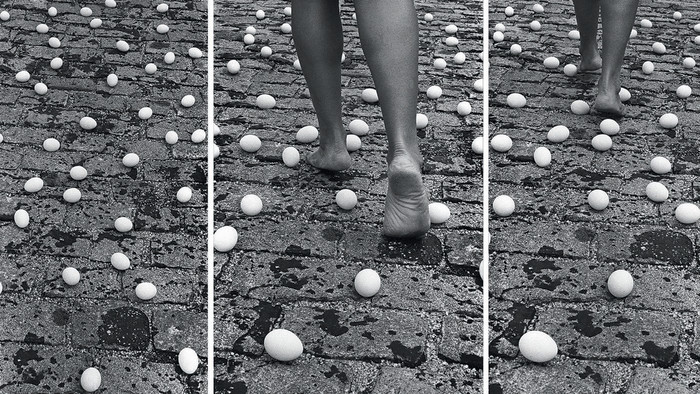
Roula Khalaf, Editor of the FT, selects her favourite stories in this weekly newsletter.
In 1981, on the streets of Rio de Janeiro, Anna Maria Maiolino negotiated a path barefoot across a pavement littered with chicken eggs. Bringing the saying “walking on eggshells” dramatically to life, her performance work “Entrevidas” (“Between Lives”) reflected the precariousness of the new political order in Brazil as military dictatorship began to give way to civilian rule.
Was she fearful? “Dictators are stupid, they don’t understand your metaphors,” the artist replies. “You have to understand it is a minefield about the fragility of life. Have you ever been to a coop and picked up an egg? It’s beautiful — you’re taking the world in your hand.”
Photographs of the work are included in Making Love Revolutionary, a survey spanning six decades of the Brazilian artist’s career at the Whitechapel Gallery in London. “On the eve of Brazil’s first free elections in 1982, brought about by public protest, ‘Entrevidas’ . . . is a succinct and poetic representation of hunger, resistance and hope,” writes Iwona Blazwick, director of the Whitechapel, in the catalogue.
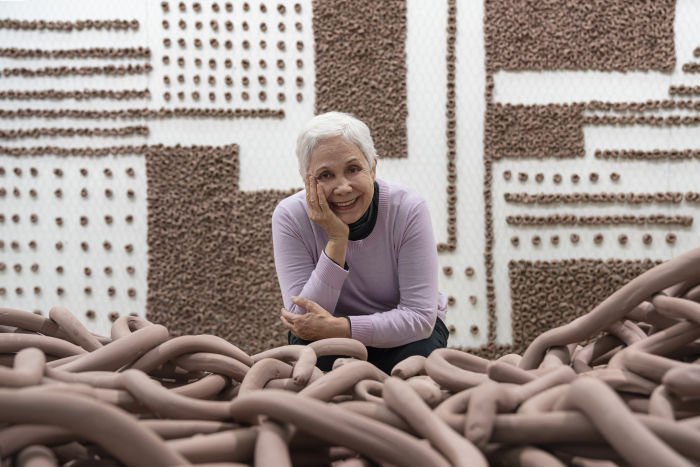
I meet Maiolino, now 77, at the gallery with a translator. Speaking primarily in Portuguese, but also in English and Italian, she is instantly warm and receptive. Does she consider herself an artist or an activist? “I never went on demos,” she replies. “Art is the activist. Art is a political exercise. When the moment asks me to take a position, I use metaphors to speak.” These visual metaphors sometimes turn violent, as in “É o que sobra” (“What is left over”) (1974), which shows her on the point of slicing her tongue with a pair of scissors.
Maiolino has worked in an innovative way across various media. She has created abstract fabrications from folds of paper, such as “Desenho Objeto” (“Drawing Object”) from 1974-76; she has taken transfixing photographs, including “By a Thread” (1976), which shows a single length of string hanging from the mouths of Maiolino, her mother and daughter. She has also made Super8 films: the standout example here, “In-Out” (“Antropofagia”) (1973), features unsettling footage of mouths stuffed with string. “Drawing is a constant practice but in each series, I seek other questions. I’m not an artist you can pigeonhole,” she says.
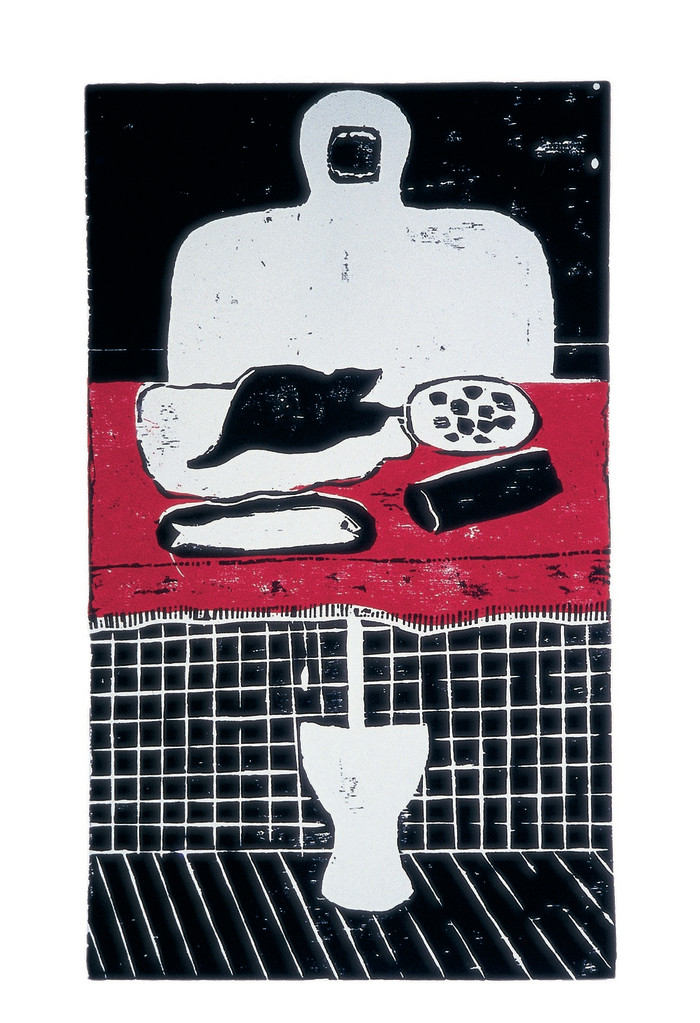
The Whitechapel exhibition has travelled from the Padiglione d’Arte Contemporanea in Milan, boosting Maiolino’s profile in Europe, where she has been somewhat overlooked. The show brought her full circle: she left Italy in 1954, aged 12, when her family, who lived in Calabria, set sail for Venezuela from Naples, destitute and hungry from the economic downturn of the postwar years.
After those early experiences, she saw Italy as “a wicked stepmother, on a psychological level, that had not looked after me”, she says. But having worked on the show in Milan, Maiolino is now “at peace” with the country.
In 1960, she decamped to Rio de Janeiro, immersing herself in classes at the engraving studio of the Rio de Janeiro National Art School, and marrying the artist Rubens Gerchman. “My [then] husband introduced me to the woodcuts of north-eastern Brazil. [The woodcut tradition] criticised political situations so it was a medium that, for me, was the easiest way to express myself.”
One of her most provocative woodcuts, “Glu Glu Glu” (1967), shows an open-mouthed, dismembered female figure sitting at a table. Bodily cycles preoccupy her: digesting, defecating and hunger — both the starvation she faced in Italy and what she calls the “hunger in the belly” of her radical 1978 installation “Monumento à Fome/Mitos Vadios” (“Vagabond Myths”).
In the 1960s Maiolino gained momentum, finding a home in the Nova Figuração or New Figuration movement. Her reputation was boosted by participating in the seminal 1967 show New Brazilian Objectivity at the Museum of Modern Art in Rio de Janeiro. In 1968, she followed Gerchman to New York; in 1971, following a productive artistic stint at the Pratt Institute in Brooklyn, she left Gerchman and returned to Brazil without him.
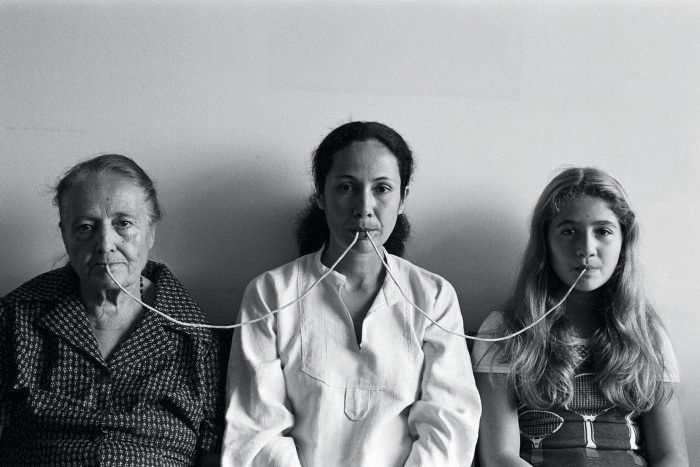
Back in Brazil, she abandoned figuration — a “great turning point” — creating her own strain of abstraction. Her “Mental Maps” series (1971) is made up of meticulously plotted grids dotted with formative places, emotions and experiences. Another series, the exquisite coloured ink works “Piccole Note” (“Small Notes”) from 1984-89, evokes her subsequent time in Argentina.
“I was married to another artist, an Argentine [Victor Grippo] — it was impossible to make art with him,” she says. “I was self-caged because I was prepared to be a wife and a mother.” Her comments bring to mind a quote in the catalogue from the US curator (not of this show) Helen Molesworth, that there’s something of the “housewife gone mad” about Maiolino’s work.
The artist is nonplussed by the assessment. “I cook very well; I’m good at ironing. I have no problem with that. At the same time, I read philosophy, I write poetry. I can make a plate of spaghetti as if it were poetry.”
On display at the Whitechapel is a major installation in unfired clay, which was created on site. She embraced the material in the 1980s. “When I put my hand in the clay, that was a turning point because it’s such a primary thing; clay is matter,” she says.
The collective aspect of working with a team — she cannot model three or four tons of clay alone — is clearly gratifying. “The five people who work with me, we’re all happy.” At that moment, holding that thought, Maiolino looks truly content.
To January 12, whitechapelgallery.org
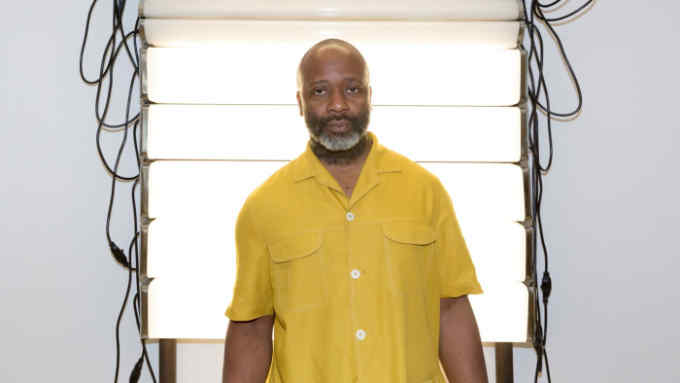
Comments